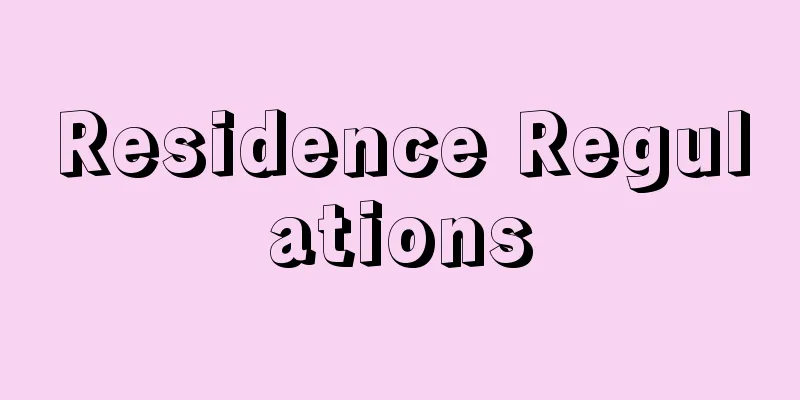Negative image

|
The image on a film or dry plate after exposure and development. The light and dark and shading of the subject are the opposite of those of the subject, and the colors of a color negative image are the complementary colors of the subject, for example, red is cyan, blue is yellow, and green is magenta. Also called a negative, a positive image is created by printing and enlarging it to have the same light and dark and colors as the subject. Source: Encyclopaedia Britannica Concise Encyclopedia About Encyclopaedia Britannica Concise Encyclopedia Information |
|
撮影,現像処理の終ったフィルム,乾板上の画像のこと。被写体とは明暗,濃淡が逆になり,さらにカラーネガの画像の色は,被写体の色の補色画像で,たとえば赤色はシアン,青色は黄,緑はマゼンタとなっている。単にネガともいい,焼付け,引伸し処理により被写体と同じ明暗,色の陽画をつくる。
出典 ブリタニカ国際大百科事典 小項目事典ブリタニカ国際大百科事典 小項目事典について 情報 |
<<: Non-official officer - Ingaikan
Recommend
Shinran - Shinran
A monk from the Kamakura period. Founder of the Jo...
Doran - André Derain
French painter. Born June 10th in Chatou, a subur...
Daihachiban - Oyatsuban
…The dimensions of the base paper are 788mm x 109...
Imitative magic
… [Various types of sorcery] According to the pri...
Gafsa (English spelling)
The capital of Gafsa Governorate in central-wester...
Shop name - Yago
A common name for a "family." It is als...
Sinter forging
…In order to completely eliminate the voids and o...
Nishinoshima
An uninhabited andesitic active volcanic island o...
Official Property Rate Law - Kanmotsurippo
In the early 10th century, the Ritsuryo tax system...
Portuguese literature
Portuguese literature has its origins in Provence...
Rosa acicularis (English spelling) Rosa acicularis
…[Yamanaka Second Son] [Nitta Aya]. … *Some of th...
Valley Glacier
...One type is formed on flat, vast continents an...
Gesner, J.
...The word comes from the Latin "seminarium...
Completed payment list - Completed payment list
In the Edo period, this document was issued when t...
Ubuiwai - Ubuiwai
...A celebration in which a pregnant woman is giv...









